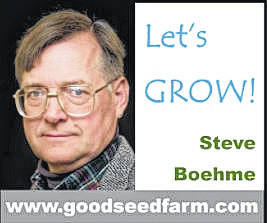
As much as you might wish for a particular tree, and no matter how much that tree appeals to you, you can’t fool it into thriving in growing conditions it doesn’t like. The same goes for pretty much any woody plant, but it’s particularly important with trees because they require so much more time, effort and expense. Installing a tree in the wrong location can create a host of problems and consequences, for the tree and for yourself, and can even condemn it to death.
People often resist planting trees because of bad experiences in the past, uncertainties and doubts. Knowledge is power in such cases. Just because there are trees that were poorly chosen, mismanaged, or poor quality doesn’t mean that you can’t be successful.
Think of yourself as a foster parent, when selecting any plant. Before you adopt, you must ask yourself whether you have the appropriate home for it, or whether you’ll have to take special measures for it to live a normal life. One thing for certain is that, no matter what the growing conditions are, there’s a plant that will indeed thrive there, grow to an appropriate size, and improve your quality of life. You just need to do your diligence.
We first like to ask: “What is the purpose of this tree, and how much space does it have?” We like trees and we want them around us, but each tree should have a purpose (or more than one). Do you want shade? Windbreak? Privacy? Perhaps you just want to look out your window and see attractive blooms or fall color. A tree can have more than one function, but thinking about this is a valuable step in choosing the right one.
It helps to simply look around you and see what trees seem to thrive in your neighborhood. We’ve found that “volunteers” (trees that come up from seed all by themselves) generally do better than transplants. This is simply because volunteer trees are happy with the conditions where they sprout and grow. Soil fertility and moisture, sun or shade, summer and winter temperatures, wind, and other factors are good for the tree or it wouldn’t grow. If you’re considering a particular tree, do you see healthy examples of it around you?
It’s easy to research trees. Our two favorite sources are the “Plant Finder” at www.missouribotanicalgarden.org, and Edward F. Gilman’s book “Trees for Urban and Suburban Landscapes”, which I call my “tree bible”. Both sources offer a complete, easy-to-understand summary of every landscape tree for our area, organized alphabetically. It’s easy to search online by the tree name (either common or botanical). The Missouri Botanical Garden usually appears in the first page of search results. Ed Gilman’s book is widely available; your local library most likely has it.
Each tree listing has a description of the tree, hardiness zones (we’re in zone 6 or 6a), what growing conditions it likes, growth rate, growth habit, mature size, common pests and diseases, and typical landscape use. A short description explains what makes the tree special, which hybrids are best and why, problems to watch for, and what growing conditions are ideal. The few minutes it takes to read this one-page summary are well worth it, and could save you from bad mistakes.
Steve Boehme is a landscape designer/installer specializing in landscape “makeovers”. “Let’s Grow” is published weekly; column archives are on the “Garden Advice” page at www.goodseedfarm.com. For more information is available at www.goodseedfarm.com or call GoodSeed Farm Landscapes at (937) 587-7021.


